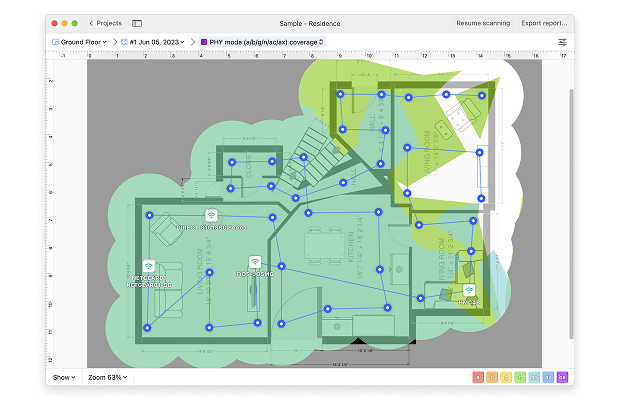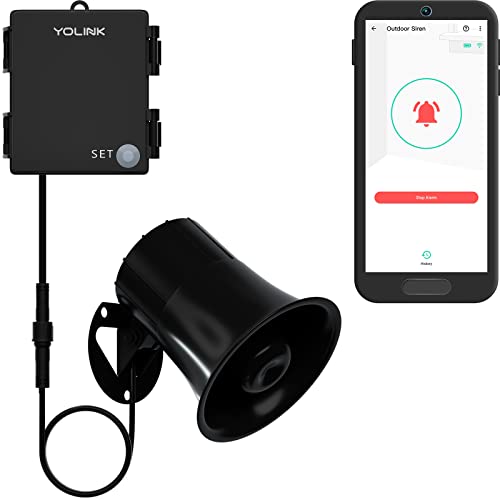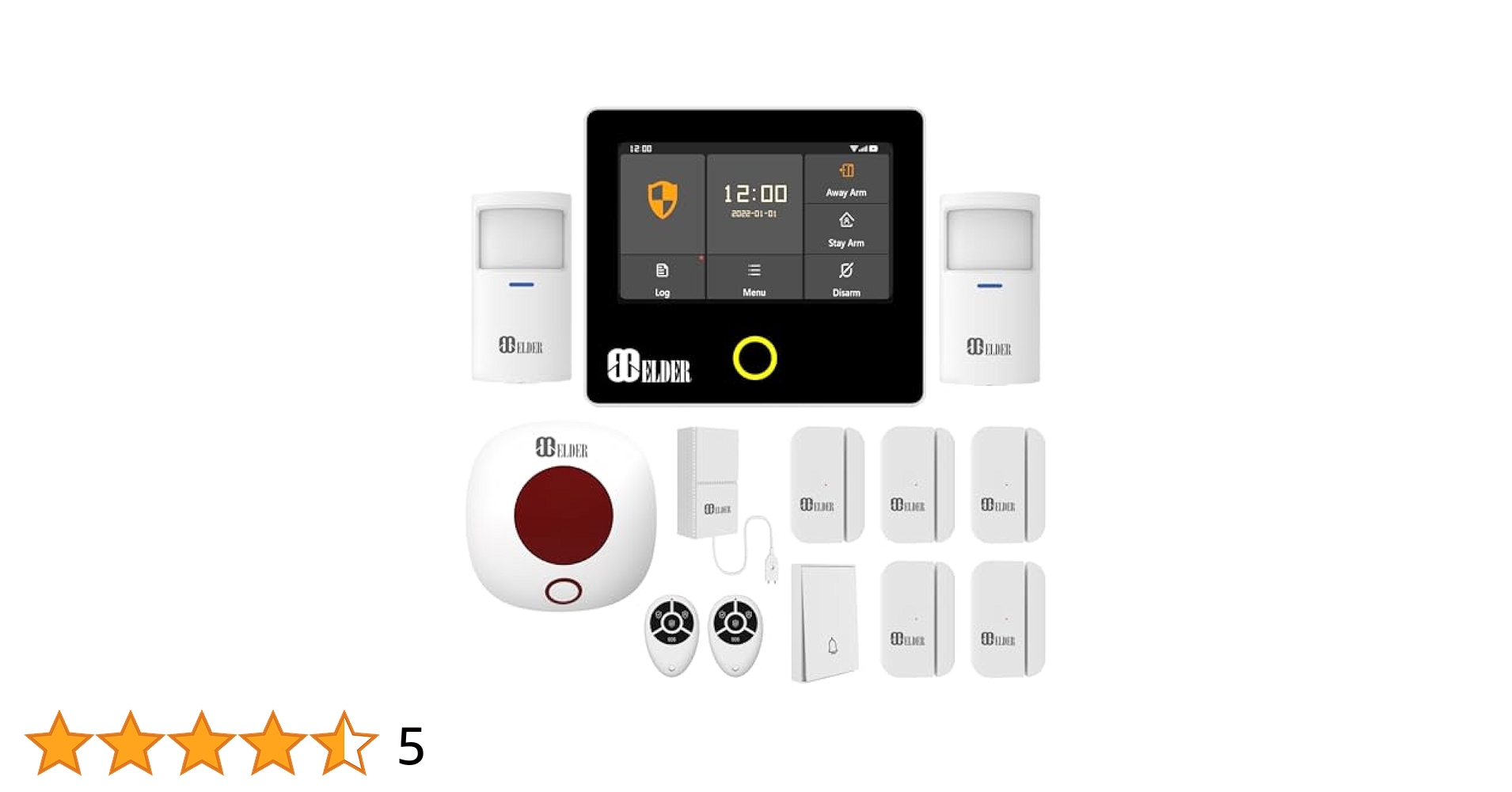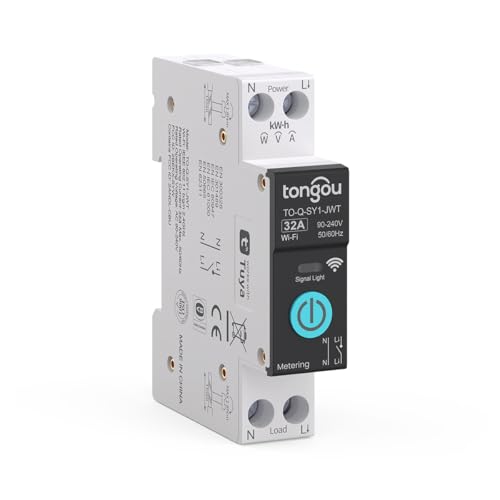Are you tired of slow internet and dead zones in your home? Imagine knowing exactly where your Wi-Fi signal is strong and where it drops.
A Wi-Fi heatmap for your home can reveal this hidden information in a simple, visual way. By understanding your Wi-Fi coverage, you can boost your connection, stream without buffering, and enjoy seamless online experiences. Keep reading to discover how creating a Wi-Fi heatmap can transform your home network and solve your connectivity problems once and for all.
Why Wi-fi Heatmaps Matter
Wi-Fi heatmaps show where your wireless signal is strong or weak. They help you see how well your Wi-Fi covers your home.
Using a heatmap makes it easier to fix Wi-Fi problems. It shows you exactly where to improve your network.
Spotting Dead Zones
Dead zones are areas with little or no Wi-Fi signal. They cause slow internet or no connection at all.
A heatmap highlights these dead zones clearly. This helps you find where your Wi-Fi does not reach well.
- Shows exact spots with no signal
- Makes it easy to know where to add help
- Helps avoid guessing about weak areas
Improving Coverage
Good Wi-Fi coverage means strong signal everywhere in your home. A heatmap helps you see how far your Wi-Fi reaches.
You can use the heatmap to add devices like extenders or mesh points. This spreads the signal to all rooms.
- Shows weak spots where coverage drops
- Helps place extenders for best results
- Ensures strong Wi-Fi in every room
Optimizing Router Placement
Where you put your router affects Wi-Fi strength. Heatmaps help find the best spot for the router.
Moving the router based on heatmap data can improve speed and reduce dead zones. It saves time and effort.
- Shows signal strength in different rooms
- Helps find central spots for the router
- Reduces interference and signal blocks
Tools To Create A Wi-fi Heatmap
Creating a Wi-Fi heatmap helps you see signal strength in your home. It shows where your Wi-Fi is strong or weak.
There are different tools you can use to make a Wi-Fi heatmap. These include mobile apps, desktop software, and professional equipment.
Mobile Apps
Mobile apps are easy to use for quick Wi-Fi mapping. You can walk around your home and collect data on your phone.
Many apps show signal strength with colors. They help you find dead zones and areas with good coverage.
- Use your smartphone or tablet for scanning
- Easy to carry and use anywhere in your home
- Some apps work on both iOS and Android
- Good for simple, fast Wi-Fi checks
Desktop Software
Desktop software offers more detailed Wi-Fi heatmaps. It usually works with a laptop connected to Wi-Fi.
This software collects data over time and shows maps with many details. It helps with larger or complex homes.
- Run on Windows or Mac computers
- Provide detailed signal strength maps
- Help analyze Wi-Fi channel interference
- Allow saving and exporting heatmap reports
Professional Equipment
Professional equipment includes special tools for Wi-Fi analysis. These tools offer very accurate heatmaps.
They are used by network experts to plan and fix Wi-Fi networks. This equipment can be costly but very precise.
- Use dedicated Wi-Fi scanners and sensors
- Provide detailed signal and interference data
- Help design complex Wi-Fi networks
- Often used in business or large homes
Steps To Map Your Home Wi-fi
Mapping your home Wi-Fi helps find weak signal spots. It shows where the signal is strong or weak.
This guide explains how to prepare your space, measure signal strength, and analyze the heatmap.
Preparing Your Space
Clear the area where you will test your Wi-Fi signal. Remove objects that block the signal like large metal items.
Make sure your Wi-Fi router is in its usual place. Turn off devices that might cause interference.
- Clear clutter and large metal objects
- Keep your router in the normal spot
- Turn off devices causing interference
Measuring Signal Strength
Use a Wi-Fi analyzer app on your phone or laptop to measure signal strength. Walk around your home slowly while checking the signal.
Take readings in every room and near walls. Note places where the signal is weak or drops out.
- Download a Wi-Fi analyzer app
- Walk slowly through each room
- Record signal strength at different spots
- Focus on weak or no-signal areas
Analyzing The Heatmap
Upload your signal data into a heatmap tool or app. The heatmap shows colors that tell where Wi-Fi is strong or weak.
Use the heatmap to find spots that need better coverage. Move your router or add devices to fix weak areas.
- Use a heatmap tool to view your data
- Strong signals show in bright colors
- Weak signals show in dull colors
- Adjust your router or add extenders if needed

Credit: thewifispecialist.co.uk
Common Wi-fi Signal Issues
Wi-Fi signals often face problems that reduce speed or cause drops. Knowing these issues helps improve your home network.
Many factors affect Wi-Fi quality. Some come from the environment, others from the devices themselves.
Interference Sources
Other electronics can cause interference with your Wi-Fi signal. This makes the connection weak or unstable.
Common devices that cause interference include microwaves, cordless phones, and Bluetooth gadgets.
- Microwaves emit signals that disrupt Wi-Fi
- Cordless phones use the same frequency bands
- Bluetooth devices share channels with Wi-Fi
- Baby monitors and wireless cameras also interfere
Physical Barriers
Walls, floors, and furniture can block Wi-Fi signals. Thick materials reduce signal strength a lot.
Metal and concrete block signals more than wood or drywall. Large objects cause dead zones in your home.
- Concrete walls weaken signals strongly
- Metal objects reflect or absorb signals
- Glass and mirrors can reduce signal quality
- Furniture placement affects Wi-Fi coverage
Router Limitations
Older routers may not cover large homes well. They have limited range and slower speeds.
Router placement also matters. Putting routers in corners or near floors lowers signal reach.
- Old routers do not support fast Wi-Fi standards
- Low-quality routers have weak antennas
- Router location affects signal spread
- Too many devices on one router slow down speed
Techniques To Boost Wi-fi Signal
Wi-Fi signals can be weak in some parts of your home. This makes internet slow or unstable. You can use simple ways to improve Wi-Fi coverage.
These techniques help you get a stronger Wi-Fi signal in every room. They are easy to do and do not need special tools.
Router Placement Tips
Place your router in a central spot in your home. Avoid putting it near walls or metal objects. These can block the Wi-Fi signal.
Keep the router high up, like on a shelf or table. This helps the signal reach further and cover more area.
- Put the router in an open space
- Avoid corners or inside cabinets
- Keep away from microwaves and cordless phones
- Place it higher than floor level
Using Wi-fi Extenders
Wi-Fi extenders boost your signal to reach far corners of your home. They catch the signal from your router and send it farther.
Place extenders where the signal is still strong. This helps extend Wi-Fi without losing speed or quality.
- Choose extenders compatible with your router
- Place extenders between router and weak signal areas
- Avoid placing extenders too far from the router
Adjusting Router Settings
You can change some settings in your router to improve Wi-Fi. Adjust the channel to avoid interference from nearby networks.
Switch between 2.4 GHz and 5 GHz bands. 2.4 GHz covers more distance. 5 GHz is faster but works best close to the router.
- Change Wi-Fi channel to a less crowded one
- Use 5 GHz for fast connections nearby
- Use 2.4 GHz for longer range
- Update router firmware regularly

Credit: pixenate.com
Advanced Solutions For Tough Spots
Wi-Fi signals can be weak in some areas of your home. These spots cause slow internet and dropped connections. Using a Wi-Fi heatmap helps find these problem areas.
After finding tough spots, you can use advanced tools to improve Wi-Fi coverage. These tools help spread the signal better across your home.
Mesh Wi-fi Systems
Mesh Wi-Fi systems use multiple devices to cover your home with strong signals. Each device talks to the others to create one big network.
This system works well for large homes or places with many walls. It fills in dead zones and keeps your internet fast everywhere.
- Multiple units spread Wi-Fi evenly
- Easy to add more units if needed
- One network name for all units
- Automatic connection to the strongest unit
Powerline Adapters
Powerline adapters use your home’s electrical wiring to send internet signals. You plug one adapter near your router and another in the weak spot.
This method helps when Wi-Fi signals cannot pass through thick walls. It gives a wired connection without running new cables.
- Uses existing electrical wires
- Good for hard-to-reach rooms
- Easy to set up and move
- Better speed than Wi-Fi extenders
Upgrading Your Hardware
Old routers may not give the best Wi-Fi coverage. Upgrading to a newer model improves speed and range. Look for routers with the latest Wi-Fi standards.
New routers handle more devices and reduce dead spots. Adding antennas or changing router location also helps signal strength.
- Choose routers with Wi-Fi 6 or higher
- Place router in a central location
- Use external antennas if available
- Keep router away from thick walls and metal
Maintaining Strong Wi-fi Over Time
Keeping your Wi-Fi signal strong is important for a good internet experience. Over time, Wi-Fi signals can weaken if not checked and maintained.
Using a Wi-Fi heatmap tool helps you see where your signal is weak. This way, you can fix problems and keep your Wi-Fi fast.
Regular Signal Checks
Check your Wi-Fi signal often to find weak spots in your home. Use a heatmap to see where the signal drops.
Regular checks help you move your router or add devices like extenders to improve coverage.
- Scan your home every few weeks
- Look for areas with low signal strength
- Adjust router position for better coverage
- Add extenders if needed
Firmware Updates
Keep your router’s firmware up to date. Updates fix bugs and improve performance.
Check the router settings or manufacturer’s website for new firmware versions. Installing updates can boost your Wi-Fi speed and security.
- Check for updates monthly
- Follow instructions to install safely
- Reboot router after updates
Managing Connected Devices
Too many devices on your Wi-Fi can slow it down. Manage which devices connect to your network.
Limit devices that use a lot of data and disconnect ones not in use. This keeps your Wi-Fi fast and stable.
- Check connected devices regularly
- Remove unknown or unused devices
- Set limits on heavy data users
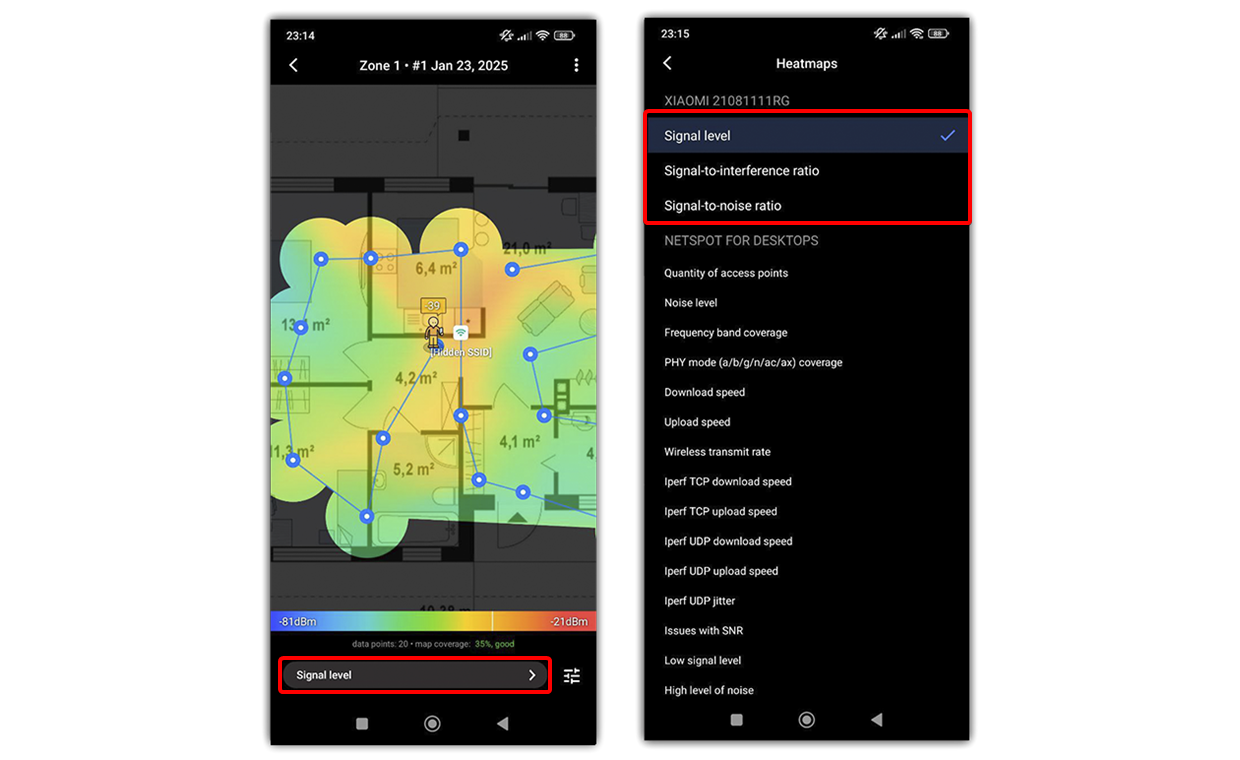
Credit: www.netspotapp.com
Frequently Asked Questions
What Is A Wi-fi Heatmap For Home Use?
A Wi-Fi heatmap visually shows your home’s wireless signal strength. It helps identify weak spots and optimize router placement. This improves overall internet speed and coverage. Using a heatmap ensures better connectivity throughout your house.
How Do I Create A Wi-fi Heatmap At Home?
To create a heatmap, use specialized apps or software on your smartphone or laptop. Walk around your home while the app measures signal strength. The tool then generates a map showing strong and weak Wi-Fi areas.
Why Is Wi-fi Heatmapping Important For Homes?
Heatmapping helps detect dead zones and interference areas in your home. This allows you to adjust router location or add extenders. It ensures faster speeds and a more reliable connection in every room.
Can Wi-fi Heatmaps Improve My Internet Speed?
Yes, heatmaps identify weak signal areas causing slow speeds. By optimizing router placement or adding boosters, you enhance coverage. This leads to faster and more stable internet throughout your home.
Conclusion
A Wi-Fi heatmap helps you see where signals are weak or strong. This tool guides you to place routers for best coverage. It saves time and avoids guesswork in fixing Wi-Fi issues. Anyone can create a heatmap with simple apps or tools.
Clear Wi-Fi means better internet for work, study, and fun. Try making a heatmap and enjoy smoother connections at home. Small changes can make a big difference in your Wi-Fi experience.
19 min read

